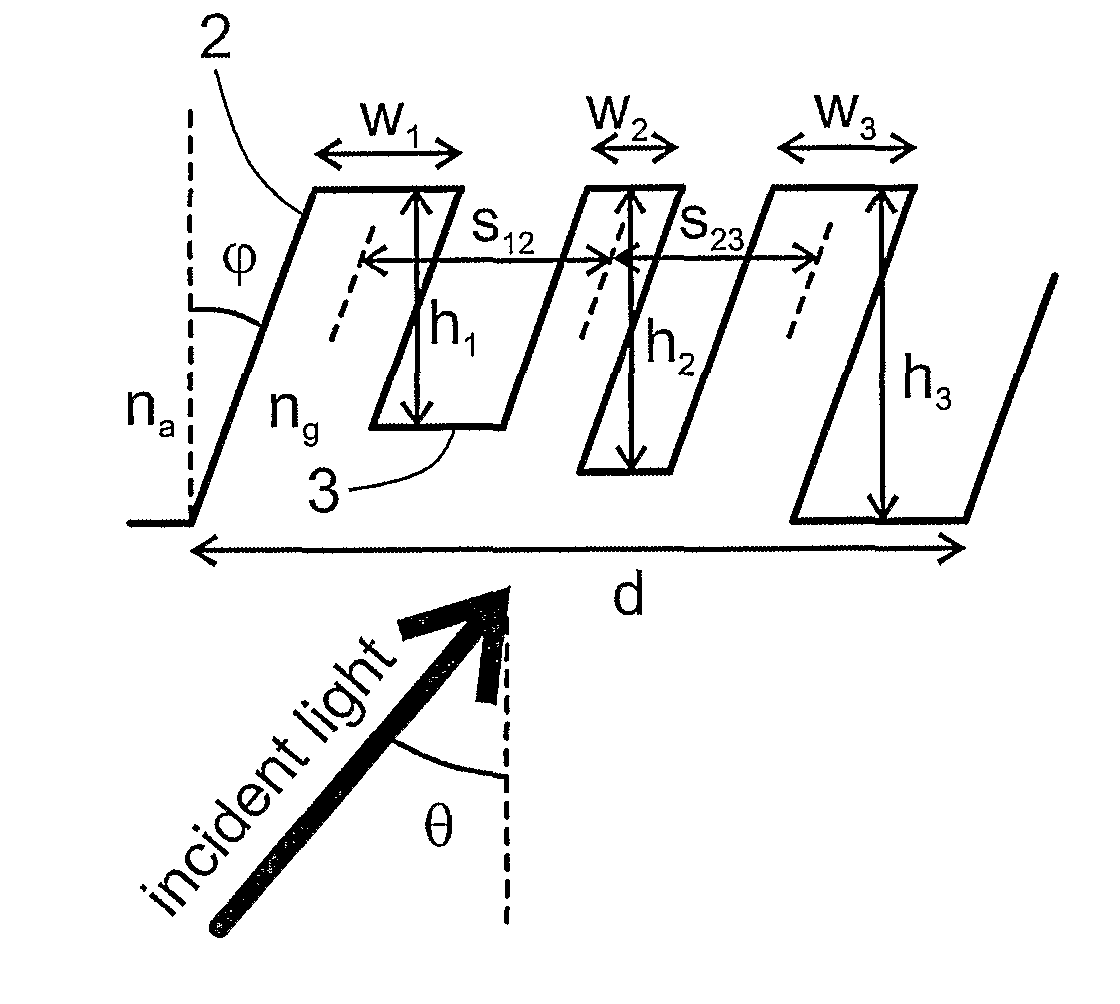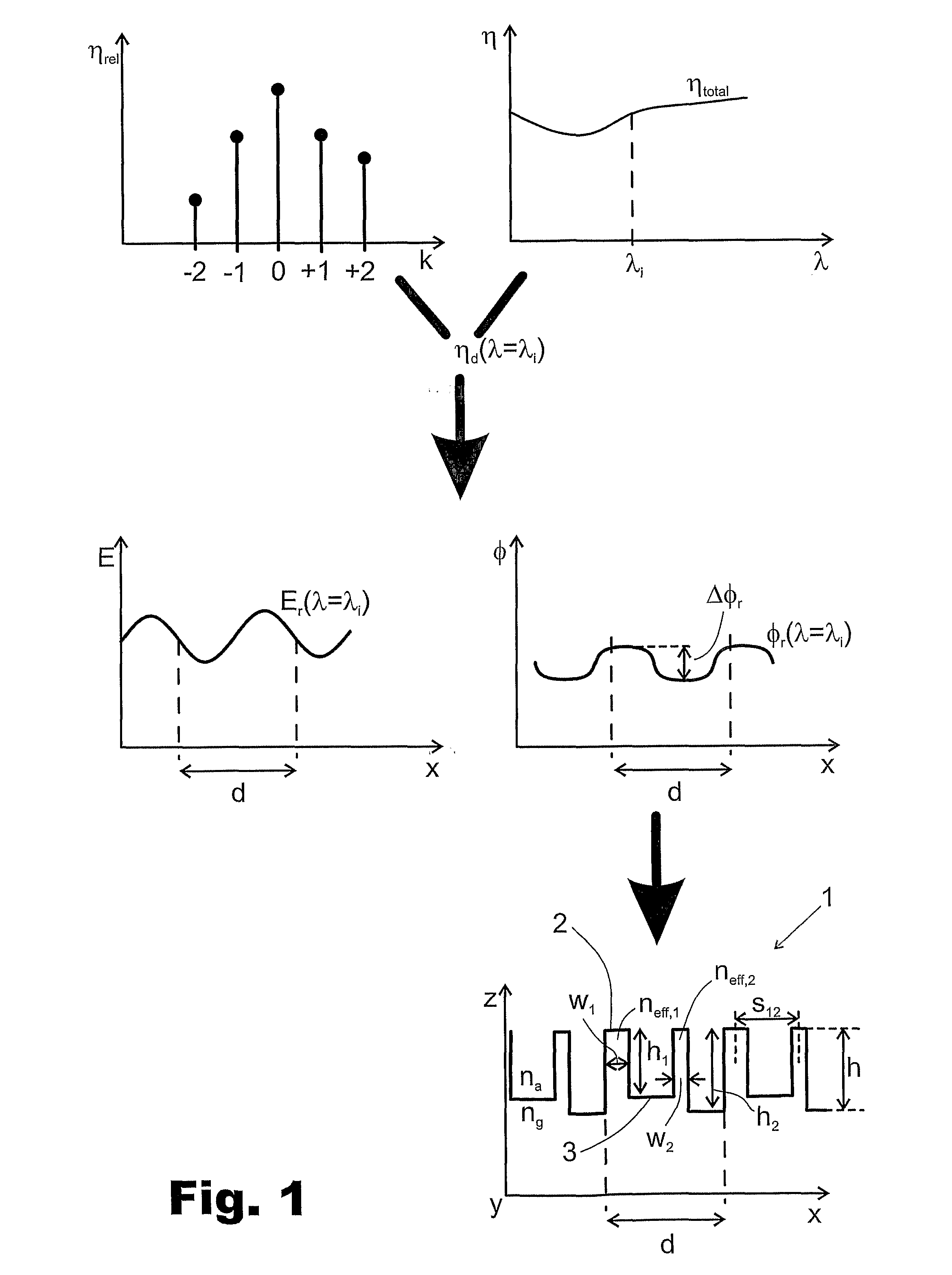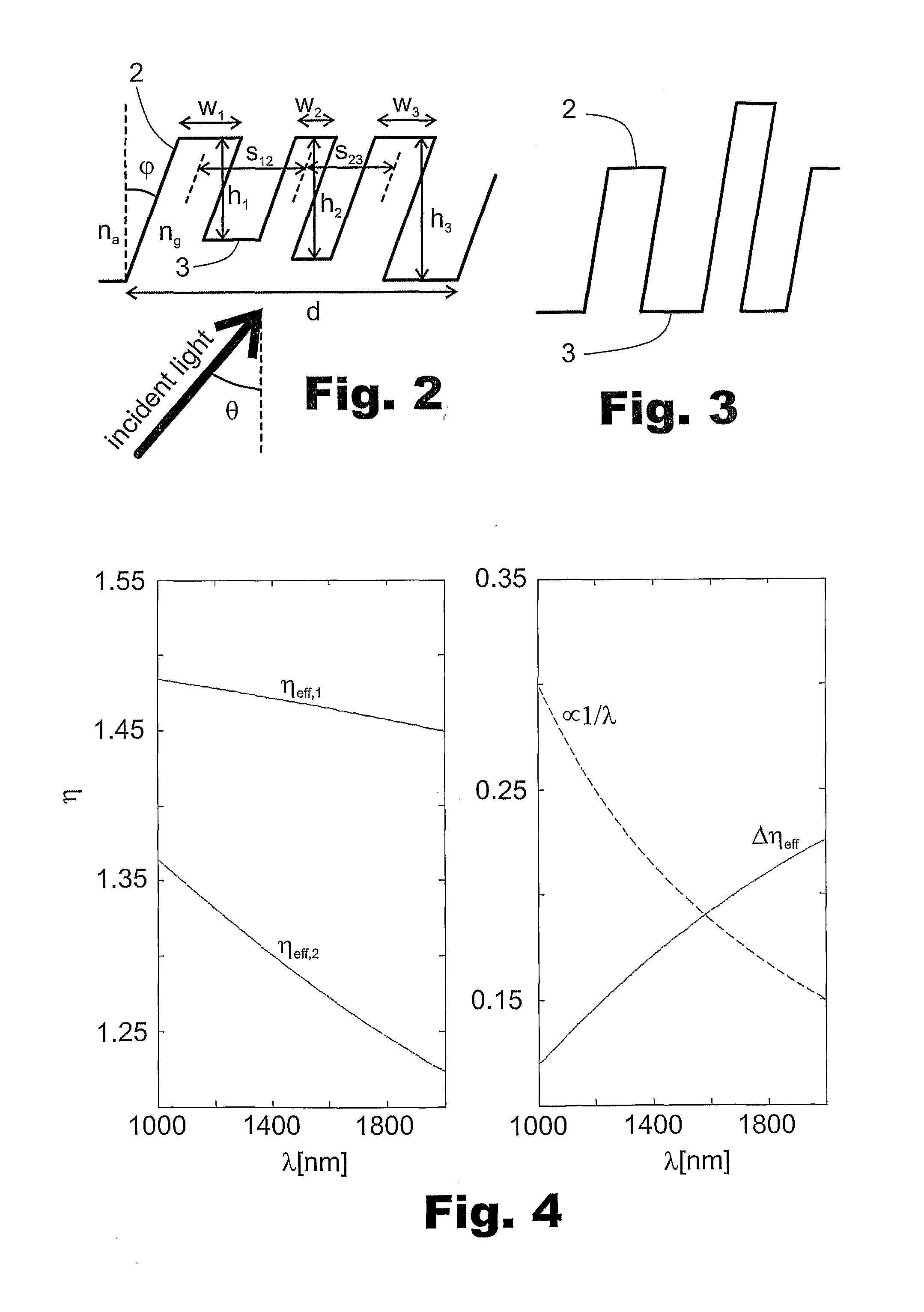Method for designing a diffraction grating structure and a diffraction grating structure
a diffraction grating and design method technology, applied in the field of diffraction grating structure and diffraction grating structure design, can solve the problems of not being able to find a universally applicable solution for controlling the wavelength response of a diffraction grating in the prior art, and achieve the effect of accurate final performance of the realized grating
- Summary
- Abstract
- Description
- Claims
- Application Information
AI Technical Summary
Benefits of technology
Problems solved by technology
Method used
Image
Examples
Embodiment Construction
[0031]The designing process illustrated by graphs of FIG. 1 starts by determination of the desired diffraction efficiencies of different diffraction orders k and the wavelength dependence of the diffraction performance. Desired diffraction efficiencies can be determined as relative proportions ηrel of the total diffraction efficiency ηtotal i.e. the sum diffraction efficiencies of all diffraction orders excluding the zeroth one, as shown in FIG. 1, or by absolute efficiencies e.g. by means of square of transmission. In the procedure of FIG. 1, it is approximated that the mutual proportions of the diffraction orders other than the zeroth one remain constant and the wavelength response is treated as the wavelength response of the total diffraction efficiency ηtotal. Whatever is the way of determining the desired diffraction efficiencies, there is principally a specific set of desired diffraction efficiencies ηd of different diffraction orders for each wavelength λi. Thus, one can then...
PUM
 Login to View More
Login to View More Abstract
Description
Claims
Application Information
 Login to View More
Login to View More - R&D
- Intellectual Property
- Life Sciences
- Materials
- Tech Scout
- Unparalleled Data Quality
- Higher Quality Content
- 60% Fewer Hallucinations
Browse by: Latest US Patents, China's latest patents, Technical Efficacy Thesaurus, Application Domain, Technology Topic, Popular Technical Reports.
© 2025 PatSnap. All rights reserved.Legal|Privacy policy|Modern Slavery Act Transparency Statement|Sitemap|About US| Contact US: help@patsnap.com



